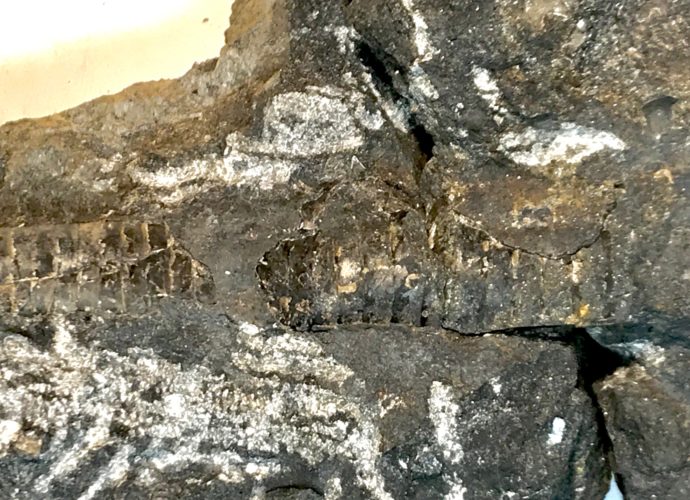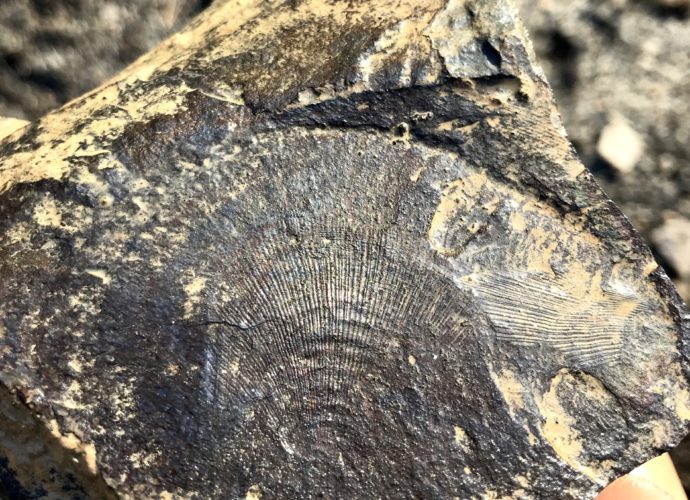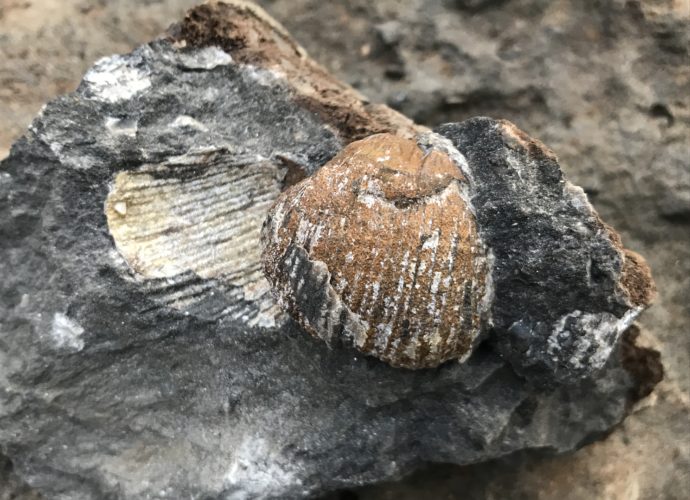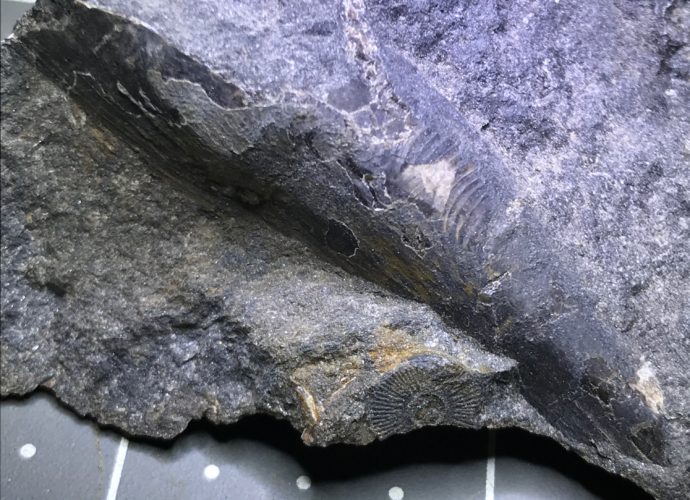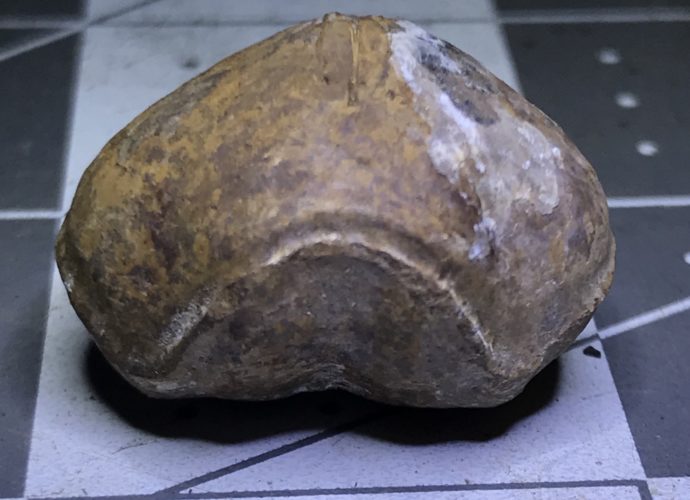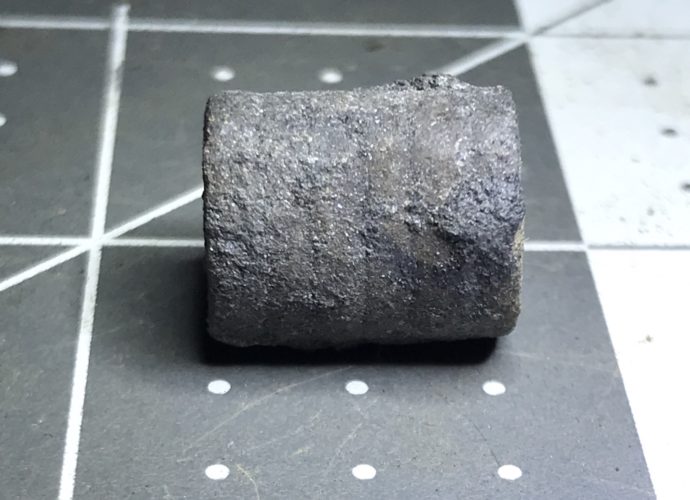Pseudorthoceras
Going by the fossil example shown on the Pennsylvanian Atlas of Ancient Life, I am calling this find a Pseudorthoceras. The rock was split into two pieces, and the photo is of them joined back up. The white markings are from an air scribe. Pseudorthoceras belongs to the class Cephalopoda.Read More →

